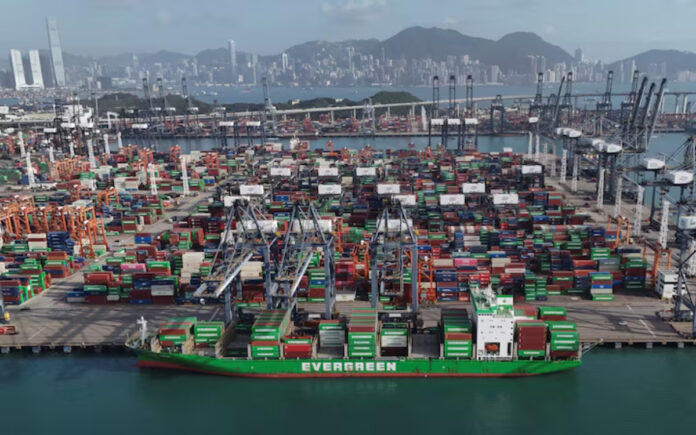Beijing: China’s export growth in May slowed to a three-month low as lingering U.S. tariffs weighed heavily on shipments, while factory-gate deflation deepened to its worst level in nearly two years. These developments have intensified challenges facing the world’s second-largest economy on both domestic and external fronts.
Customs data released Monday showed exports rose 4.8% year-on-year in value terms in May, a significant slowdown from April’s 8.1% surge and below the 5.0% growth forecast in a Reuters poll. This came despite the partial easing of U.S. tariffs on Chinese goods that took effect in early April.
Meanwhile, imports fell sharply by 3.4% year-on-year, worsening from a 0.2% decline in April and missing expectations of a 0.9% drop, reflecting continued weak domestic demand and import contraction.
Earlier in the year, exports had surged by 12.4% year-on-year in March and 8.1% in April as manufacturers rushed to ship goods ahead of impending tariffs imposed by U.S. President Donald Trump. Although a temporary truce on tariffs between Beijing and Washington provided some relief in May, trade tensions remain elevated with ongoing negotiations touching on sensitive issues including China’s control over rare earth materials and the status of Taiwan.
Trade representatives from both countries met in London on Monday to resume talks following a recent phone conversation between their leaders.
China’s trade surplus widened to $103.2 billion in May from $96.18 billion in April, underscoring the country’s persistent export strength despite slowing growth.
Also Read | California Governor Slams Trump’s National Guard Deployment in Los Angeles as Unlawful
In response to mounting trade war pressures, Beijing introduced a series of monetary stimulus measures in May, including cuts to benchmark lending rates and a 500 billion yuan low-cost loan program targeting elderly care and consumer services sectors. These efforts aim to cushion the economic blow from tariff-related disruptions, especially as China’s recovery continues to grapple with a sluggish property market and post-pandemic adjustments.
Deepening Deflationary Pressures
Data from the National Bureau of Statistics revealed that deflation intensified last month, with the producer price index (PPI) contracting 3.3% year-on-year in May—the steepest decline in 22 months—compared to a 2.7% drop in April. Consumer prices also continued to edge lower, dipping 0.1% from a year earlier, signaling weak demand and persistent inflationary challenges.
Also Read | Title 10, Protests, and Power: The Legal Limits of Trump’s Troop Deployment
The slowdown in factory activity highlights the ongoing impact of U.S. tariffs on China’s vast manufacturing sector. This cooling momentum also weighs on the faster growth in services, as uncertainty lingers over the outcome of U.S.-China trade negotiations.



